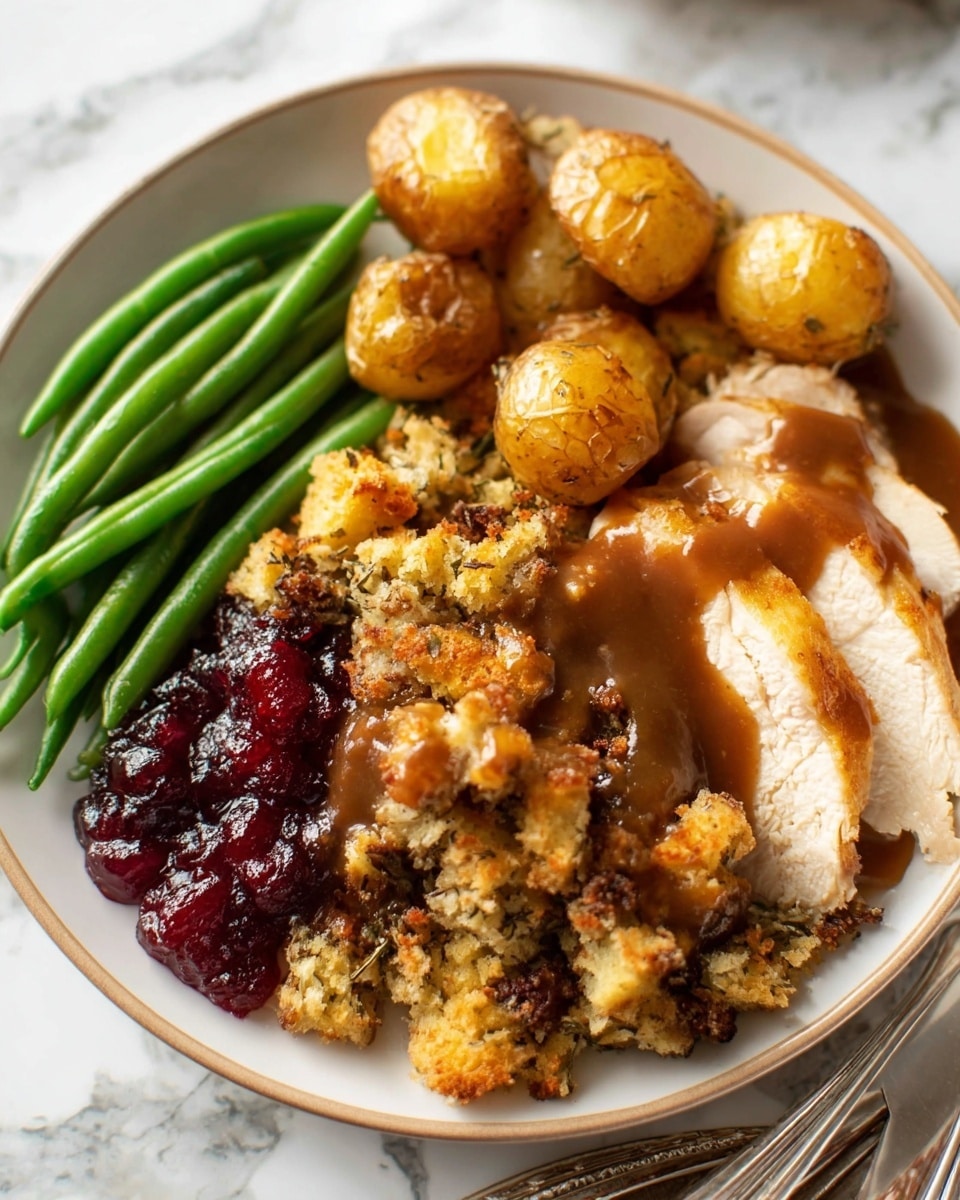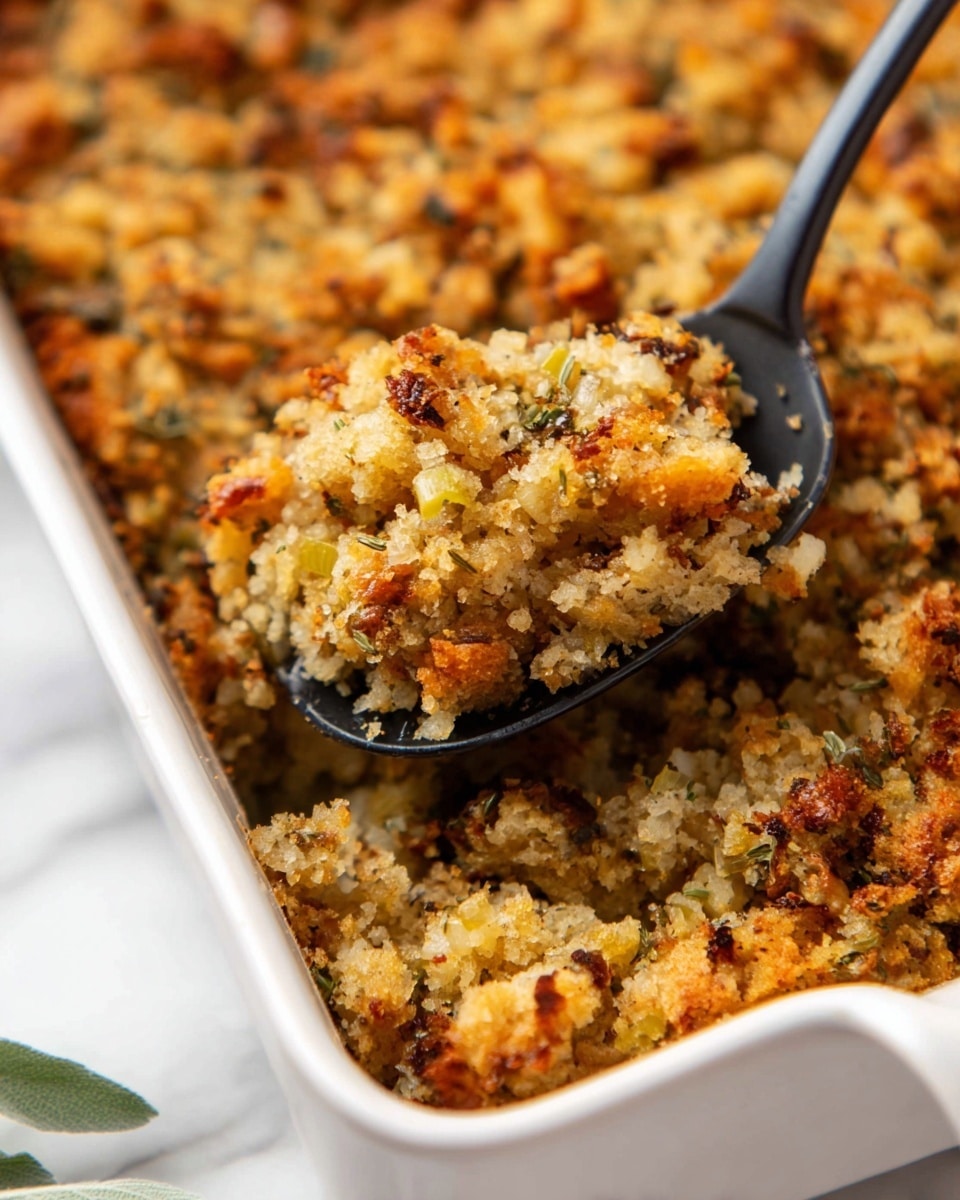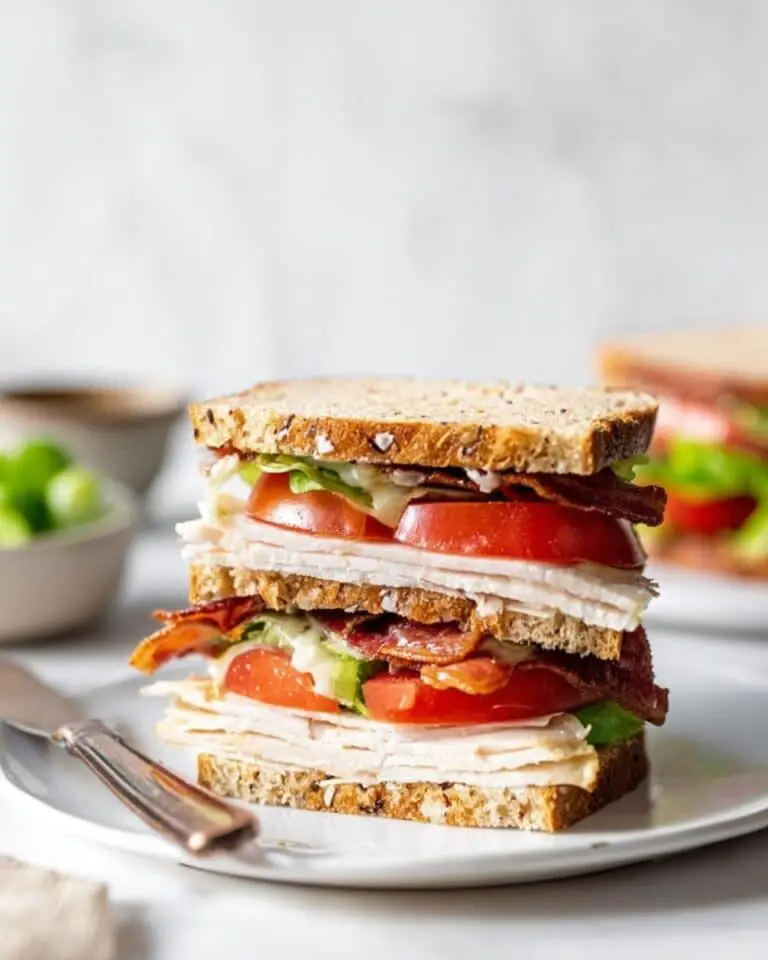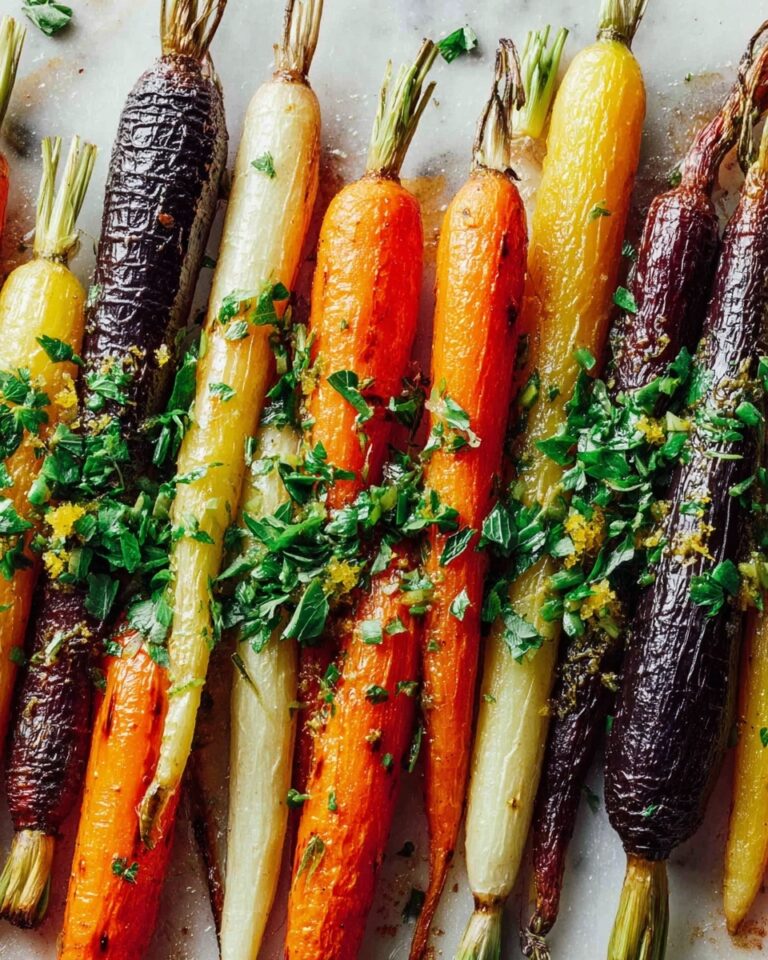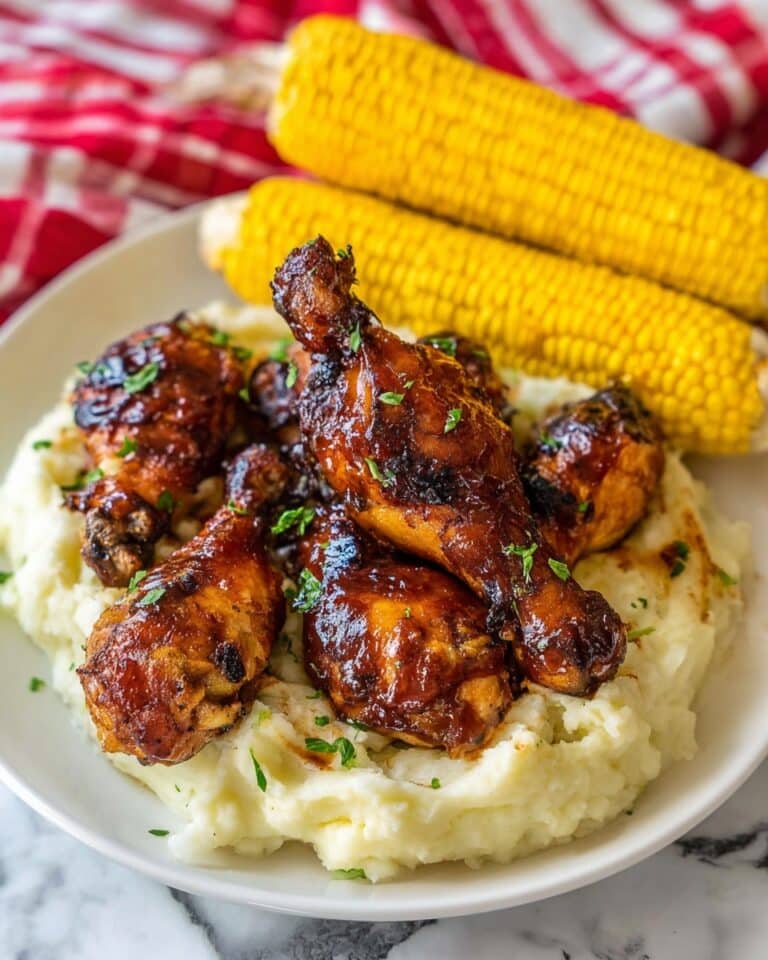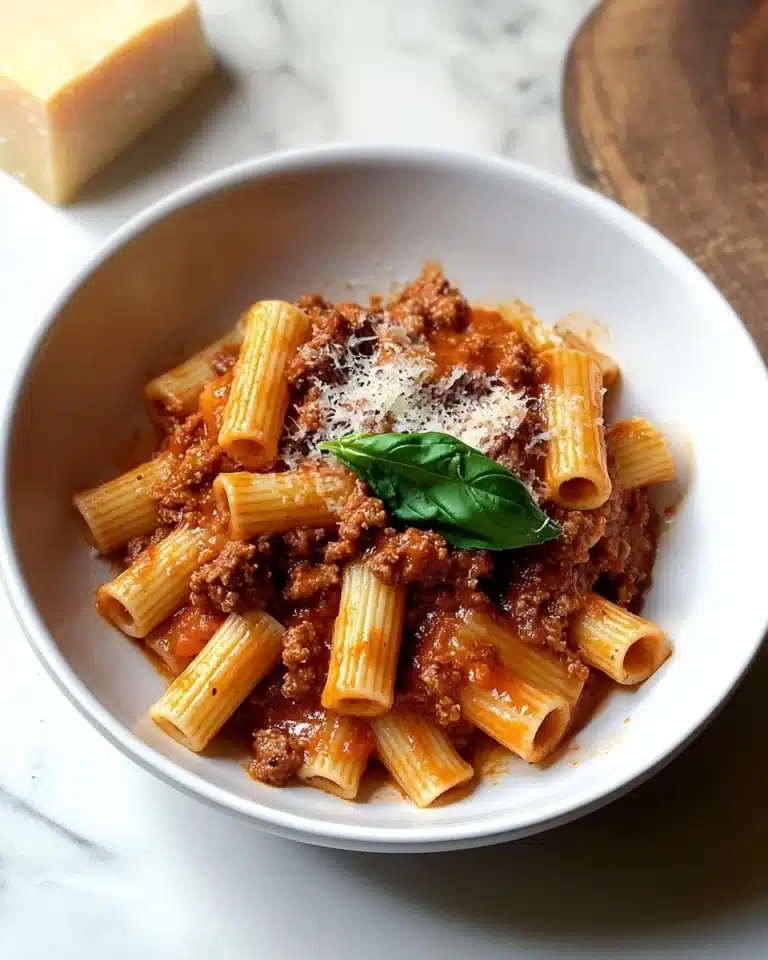I absolutely love how this Classic Sage and Onion Stuffing Recipe turns out every time—the flavors are beautifully balanced, with that comforting aroma of fresh sage and sweet caramelized onions filling my kitchen. Whether it’s a holiday dinner or a cozy Sunday roast, this stuffing always steals the show, adding that perfect savory, herby touch that everyone craves.
When I first tried this recipe, I was amazed by how simple ingredients could come together to create something so deeply flavorful. You’ll find that using day-old bread really makes all the difference, giving the stuffing that ideal crumbly texture without becoming mushy. Trust me, once you get this down, it’s going to be your go-to stuffing recipe year after year.
Why You’ll Love This Recipe
- Classic Flavors: The blend of fresh sage and caramelized onions creates a comforting, timeless taste you’ll want every holiday.
- Easy Preparation: No complicated steps or hard-to-find ingredients; perfect even if you’re short on time.
- Perfect Texture: Using slightly stale bread gives you that ideal crumb structure — crispy edges with a tender middle.
- Versatile Serving: Works beautifully as a side dish for turkey, chicken, or even a hearty vegetarian meal.
Ingredients You’ll Need
Each ingredient in this Classic Sage and Onion Stuffing Recipe plays a vital role, from the butter that deepens the flavor to the fresh herbs that brighten it up. I always recommend shopping for fresh, fragrant sage—it’s really the star of the show here.
- White Sandwich Bread: Using bread that’s 1-2 days old helps it hold up well and soak up flavors without turning soggy.
- Butter: Adds richness and helps soften the veggies; I prefer unsalted so I can control the saltiness better.
- White Onions: Finely diced for sweetness and texture; cooking them slowly is key to unlocking their natural sugars.
- Celery: Brings a subtle crunch and freshness, balancing the richness of the butter and bread.
- Garlic: Just a couple cloves finely diced to add that warm, savory base flavor without overpowering.
- Fresh Sage: Absolutely essential—the herb gives the stuffing its signature earthy, piney note.
- Fresh Thyme: Adds a complementary herbal lift; fresh is best, but dried works in a pinch.
- Salt and Black Pepper: To season and bring all the ingredients beautifully together.
- Vegetable Stock: Moistens the breadcrumbs while adding depth; you can substitute chicken stock if you prefer.
- Oil Spray: For greasing the dish and crisping the top without extra grease.
Variations
I love experimenting with this Classic Sage and Onion Stuffing Recipe to fit different occasions or dietary needs—don’t be afraid to tweak it to match your tastes. Personalizing it is what makes it truly your own.
- Adding Sausage: I once added some cooked breakfast sausage for a heartier stuffing, and my family went crazy for the meaty, smoky depth it brought.
- Gluten-Free Option: Try swapping the sandwich bread for gluten-free bread; just ensure it’s sturdy enough to break into crumbs beautifully.
- Vegetable Variations: I sometimes toss in finely chopped mushrooms or chestnuts for a seasonal twist and extra umami.
- Herb Swaps: If you don’t have sage, a mix of rosemary and parsley can still create a tasty alternative.
How to Make Classic Sage and Onion Stuffing Recipe
Step 1: Prepare the Bread Crumbs
Start by preheating your oven to 180°C (350°F). Grab your slightly stale white sandwich bread and pulse it into coarse breadcrumbs using a food processor—do this in batches if needed. The crumbs should be chunky enough to hold texture but small enough to mix well; I find this step really sets the foundation for the right stuffing texture.
Step 2: Gently Sweat the Vegetables
Melt the diced butter in a large pan over medium heat, then add your finely diced onions and celery. Patience is key here—I usually let them cook for about 15 minutes until they’re soft and just beginning to turn golden, which brings out their sweet complexity. Avoid rushing this or turning up the heat too high, or the onions might burn and become bitter.
Step 3: Add Garlic and Herbs
Once the onions and celery are softened, stir in the minced garlic, fresh sage, and thyme. Cook everything together for another 1-2 minutes, just long enough to release the herbal scents without browning the garlic. This step is when your kitchen begins to smell absolutely irresistible.
Step 4: Combine With Bread and Stock
Pour in the vegetable stock and immediately add your breadcrumbs, salt, and black pepper. Stir gently but thoroughly so the breadcrumbs soak up all the buttery, herbal goodness without getting soggy. The mixture should be moist but not dripping wet—which can ruin the final texture.
Step 5: Bake to Golden Perfection
Spray your baking dish lightly with oil, then transfer the stuffing mixture in and press it down gently with a wooden spoon to level the top. Generously spray the top with oil too—that’s what helps achieve that crave-worthy crispness. Bake for 30 to 35 minutes until the top is deep golden and crunchy. Let the stuffing rest a few minutes before serving so it sets up nicely.
Pro Tips for Making Classic Sage and Onion Stuffing Recipe
- Use Day-Old Bread: I learned the hard way that fresh bread leads to mushy stuffing; slightly stale bread soaks up flavors perfectly.
- Slow Cook Onions: Sweating the onions low and slow unlocks their natural sweetness and avoids harsh onion bites.
- Fresh Herbs Matter: Fresh sage and thyme dramatically uplift the flavor compared to dried—you’ll notice the difference immediately.
- Don’t Overwet the Mixture: Adding just enough stock keeps the stuffing moist while preventing a soggy mess in the oven.
How to Serve Classic Sage and Onion Stuffing Recipe
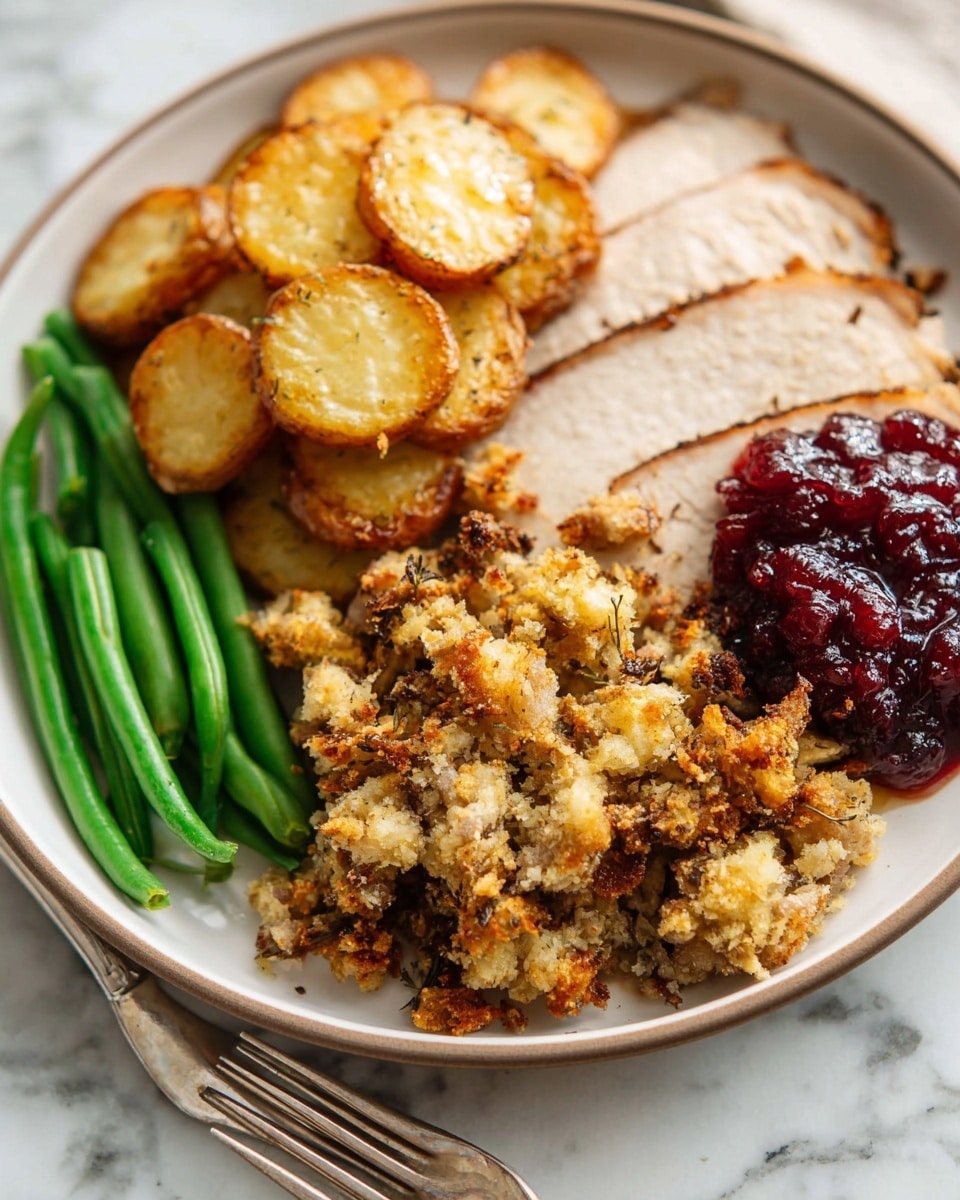
Garnishes
I often sprinkle a few extra fresh sage leaves on top after baking for a pretty, aromatic garnish. Some freshly chopped parsley adds a lovely pop of color and freshness that balances the richness. If I’m feeling fancy, a light drizzle of good-quality extra virgin olive oil right before serving really elevates it.
Side Dishes
This classic stuffing pairs wonderfully with roast turkey or chicken, but it also complements vegetarian mains beautifully. On my table, I always serve it alongside roasted root vegetables, buttery mashed potatoes, and a rich gravy to soak up every delicious bite.
Creative Ways to Present
One holiday, I baked this stuffing inside hollowed-out bell peppers as little edible bowls—everyone loved the personal touch and unique presentation! You could also try portioning the stuffing into mini ramekins for individual servings, giving your meal a classy vibe without any fuss.
Make Ahead and Storage
Storing Leftovers
I like to let any leftover stuffing cool completely and store it in an airtight container in the fridge. It keeps well for up to three days—and it’s a perfect addition to sandwiches or as a quick side the next day.
Freezing
For freezing, I portion the stuffing into freezer-safe containers or bags and freeze for up to 2 months. When it’s time to use, I thaw it overnight in the fridge for best results—freezing doesn’t significantly affect the texture if done right!
Reheating
Reheat leftovers in the oven at 175°C (350°F) for about 15-20 minutes to revive that crisp top and warm the inside evenly. I avoid microwaving because it tends to make the texture a bit soggy, which isn’t the best for this particular stuffing.
FAQs
-
Can I make this Classic Sage and Onion Stuffing Recipe ahead of time?
Absolutely! You can prepare the stuffing mixture up to a day in advance and refrigerate it before baking. Just cover it well, and when you’re ready, bake as usual. This makes holiday prep so much smoother.
-
What if I don’t have fresh sage?
If fresh sage isn’t available, dried sage can be used, but reduce the quantity by about half since dried herbs are more concentrated. Alternatively, try substituting with rosemary or thyme for a different but still delicious flavor.
-
Can I add nuts or fruit to this stuffing?
Yes! Adding toasted chestnuts, walnuts, or dried cranberries can introduce wonderful texture and flavor contrasts. I’ve found a handful of chopped nuts adds a lovely crunch that pairs beautifully with the herbs.
-
Is this stuffing suitable for vegetarians?
Definitely! This Classic Sage and Onion Stuffing Recipe uses vegetable stock and no meat products, making it an excellent vegetarian side that’s full of flavor.
Final Thoughts
This Classic Sage and Onion Stuffing Recipe holds a special place in my heart because it’s simple, straightforward, and reliably delicious every single time. It’s the kind of dish that brings everyone gathered around the table a cozy sense of home and tradition. I’d encourage you to give it a try—you’ll enjoy making it as much as eating it, and I promise it’ll earn a spot in your recipe lineup forever.
Print
Classic Sage and Onion Stuffing Recipe
- Prep Time: 10 minutes
- Cook Time: 50 minutes
- Total Time: 60 minutes
- Yield: 6 servings
- Category: Side Dish
- Method: Baking
- Cuisine: British
- Diet: Vegetarian
Description
This classic Sage and Onion Stuffing recipe offers a perfect blend of fresh herbs, sautéed onions, and celery combined with buttery breadcrumbs. Baked to a crisp golden finish, it makes a delicious side dish ideal for festive meals and everyday dinners alike.
Ingredients
Breadcrumbs
- 250g / 9oz White Sandwich Bread (preferably 1-2 days old)
Vegetables and Herbs
- 2 large White Onions, finely diced (approx 200g/7oz each)
- 1 large rib of Celery, finely diced
- 2 large cloves of Garlic, finely diced
- 2 tbsp Fresh Sage, finely diced
- 1 tsp Fresh Thyme, finely diced
Other Ingredients
- 5 tbsp / 75g Butter, diced into cubes
- 80ml / 1/3 cup Vegetable Stock
- Oil Spray, as needed
- 1/4 tsp Salt
- 1/4 tsp Black Pepper
Instructions
- Preheat Oven: Preheat the oven to 180C/350F to prepare for baking the stuffing.
- Prepare Breadcrumbs: Place the bread in a food processor and blitz into coarse breadcrumbs. You may need to work in batches to ensure even processing.
- Sauté Vegetables: Melt the butter in a large pan over medium heat. Add the diced onion and celery, and gently sweat them down until soft and lightly golden, which takes about 15 minutes. This slow cooking helps develop sweetness in the onions.
- Add Herbs and Garlic: Stir in the finely diced garlic, fresh sage, and thyme, and continue frying for an additional 1-2 minutes to release their flavors.
- Combine Ingredients: Pour in the vegetable stock, then add the breadcrumbs, salt, and black pepper. Stir everything together until the breadcrumbs are fully coated with the butter and stock mixture.
- Prepare for Baking: Spray the baking dish with oil to prevent sticking. Transfer the breadcrumb mixture into the dish, pressing down gently with a wooden spoon to level the surface.
- Top and Bake: Spray the top of the stuffing liberally with oil for a crisp finish. Bake in the preheated oven for 30-35 minutes, or until the top is crisp and deep golden brown.
- Rest and Serve: Allow the stuffing to rest for a few minutes after baking before serving to let it set slightly.
Notes
- This recipe showcases an easy and delicious method to make classic sage and onion stuffing with fresh herbs and savory vegetables.
- Using slightly stale bread helps the stuffing to hold together better and absorb flavors more effectively.
- Taking time to slow-cook onions enhances their sweetness and depth of flavor in the stuffing.
- Oil spray helps achieve a crisp golden top during baking without adding excess fat.
Nutrition
- Serving Size: 1 serving
- Calories: 221 kcal
- Sugar: 4.65 g
- Sodium: 388 mg
- Fat: 11.15 g
- Saturated Fat: 6.445 g
- Unsaturated Fat: 3.821 g
- Trans Fat: 0.399 g
- Carbohydrates: 26.43 g
- Fiber: 2.5 g
- Protein: 4.57 g
- Cholesterol: 25 mg

